Just across Central Parkway from Findlay Market, in the West End of Cincinnati, longstanding Carl Solway Gallery currently features three discrete exhibitions of works by multimedia artists Judy Pfaff, Isaac Abrams, and Kirk Mangus. Â
Pfaff’s large-scale, multi-layered prints, which occupy the majority of the Solway exhibition space, seem apt for an artist with a reputation for sprawling material-based installations that allow her to define line, color, and pattern within space. Â
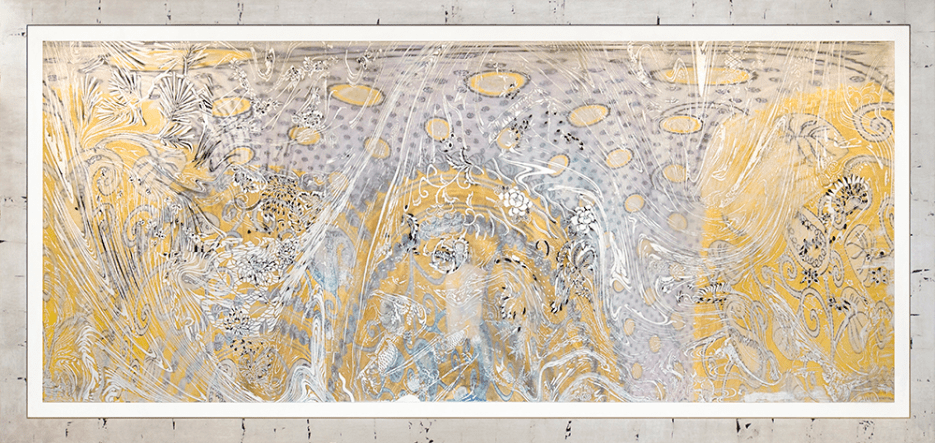
Likewise, Pfaff’s oversized prints such as the three Morning, Afternoon, and Evening Raga series in this show of new prints demonstrate a delicate, multi-layering of woodcuts and archival inkjet prints of digitally distorted lines, colors, and patterns—in addition to small moments of unique embellishments like colored silver leaf, and hand-painted plastic films and dyes on shellacked Kozo paper.
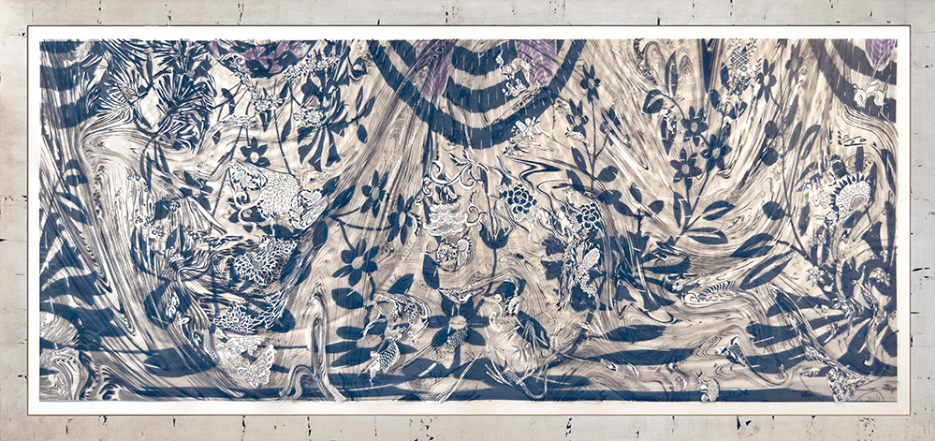
The Sanskrit word “raga†literally means coloring or dyeing, so there is perhaps even an explicit connection between the artist’s printed layers and this invocation of drapery. Be
they sumptuous bed linens, vaguely opaque window curtains, or the building block of a sari, the life-sized dimensions of the Raga series would be consistent with this implication of the works as textiles.

The artist’s site-specific multimedia installation for the Solway show, +’s & -‘s features small, framed, oil stick and encaustic studies atop archival inkjet photographs on metal of Pfaff’s studio,which the artist digitally distorted with a spinner-like motif that shows up in nearly a dozen of her other works in the show.  It is bright, colorful, and links her previous installation work with her current more two-dimensional works in this show.
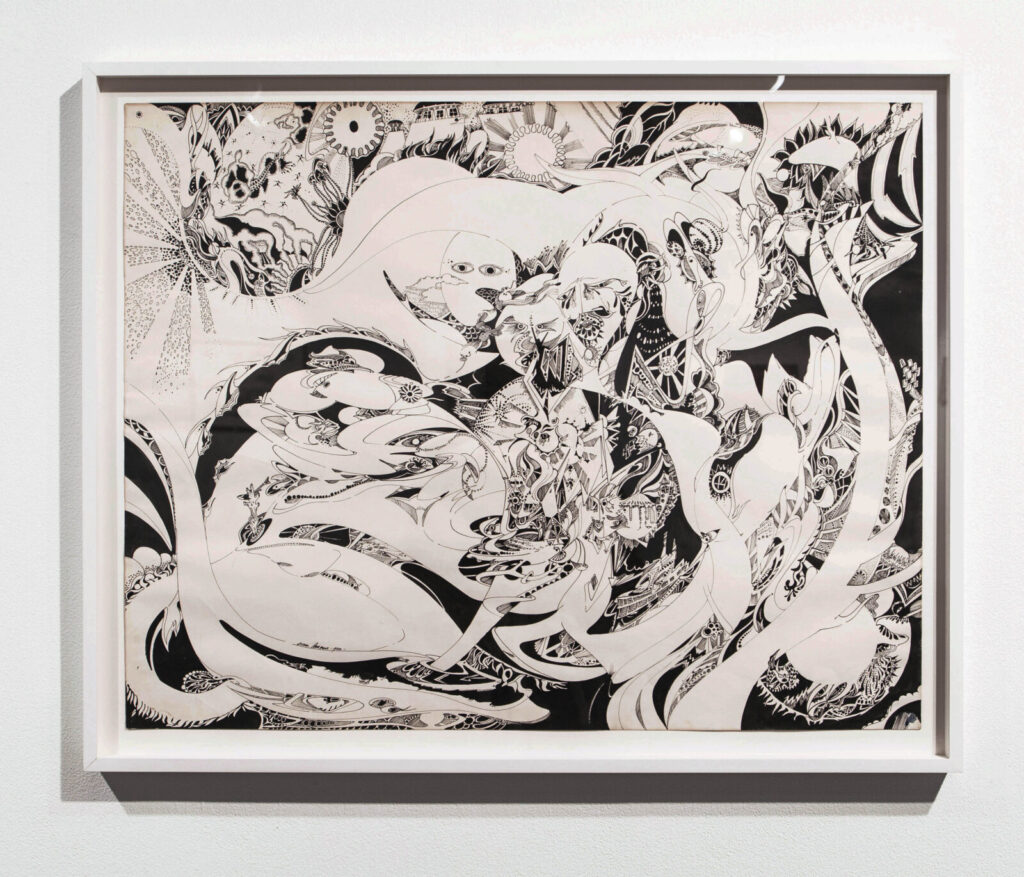
Self-taught pioneer of psychedelic art Isaac Abrams’ paintings and drawings feature the artist’s biomorphic landscapes populated by ambiguously undulating living creatures so connected to their environment that they merge with it, exemplified in such works as The Triune Reality – I (The Active) It (The Objective) Me (The Subjective), 1970, and Garden Spirit with Shimmering Eye, 2013.  Everything is alive—teeming with body parts and natural forms—everything is divine. Â
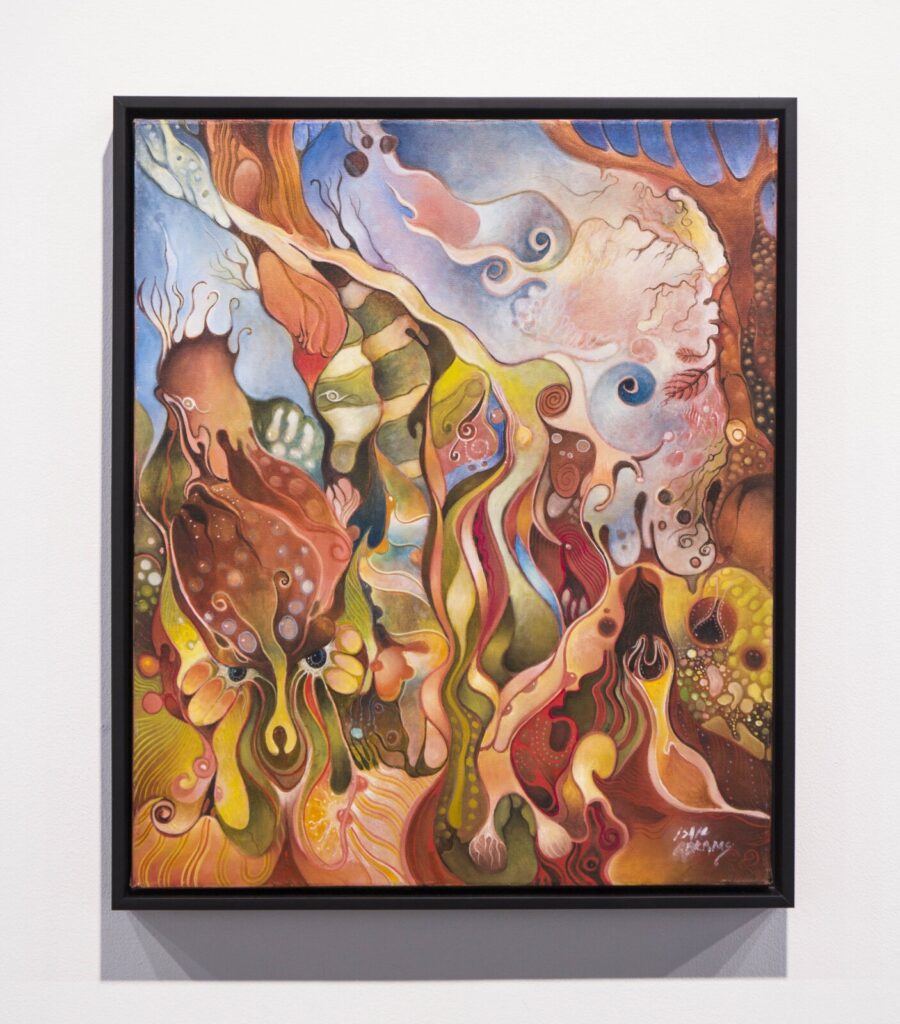
The far gallery features 21 works by the artist, and Abrams’ skill as a draftsman is particularly evident in his work that doesn’t rely on color to limn space, such as the charcoal on paper drawing, Eating Strange Fruit Brings About Strange Dreams, 2014.  In the aforementioned composition, by simply applying pressure upon his instrument, the artist wavers precariously between defining robust and plump volume as well as its dissipation and evaporation.
The work of longtime beloved Kent State Ceramics Professor Kirk Mangus in the smallest gallery at Solway is kind of a mixed bag.  Despite the artist’s charming observations of city life and the ways in which his overpopulated surfaces teem with faces and characters—formally linking his work with that of Abrams in particular—as well as a folk-like approach to carving and painting on clay, some of his pieces teeter precariously upon a fine line of cultural appropriation. Â
Posthumous biographies of the artist, who passed away in 2013, frequently speak to his careerlong interest and research in world cultures, including Iga, Oribe, Mayan, Moche Greek, Roman and Silla ceramics, which informed his work. Â

Like many late modernist artists, Mangus’ formal experimentation often involved a suggestion of the “primitive†other:  “Multi-eyed guardians†emerge from the surfaces of his wheel thrown, carved and wood–fired local stoneware, as well as his paintings in Sumi ink on silk and homemade Korean mulberry paper.
Totemic structures, face jugs, vessels, and amphoras throughout the show elude to ritual and ancient mysteries—so seemingly far removed from the current historical timeline, that they allowed the artist himself (as well as many other emerging artists within Mangus’ milieu in the late 70s) to wrestle with the implications of modernist abstractions, often via a romanticized and reductive view of non-Western cultures.
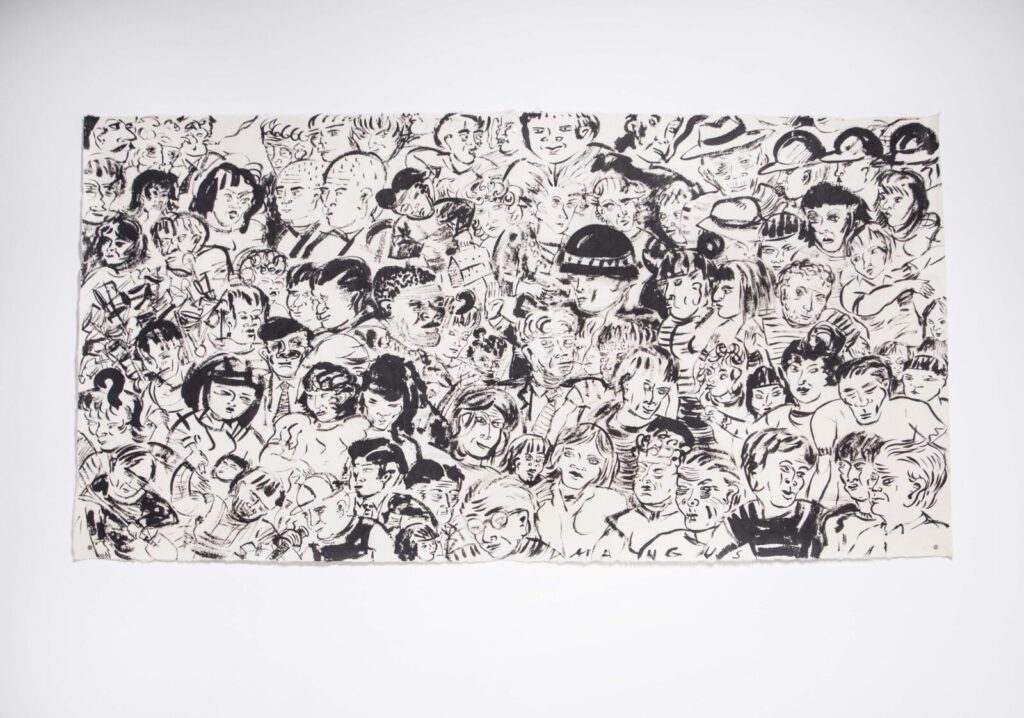
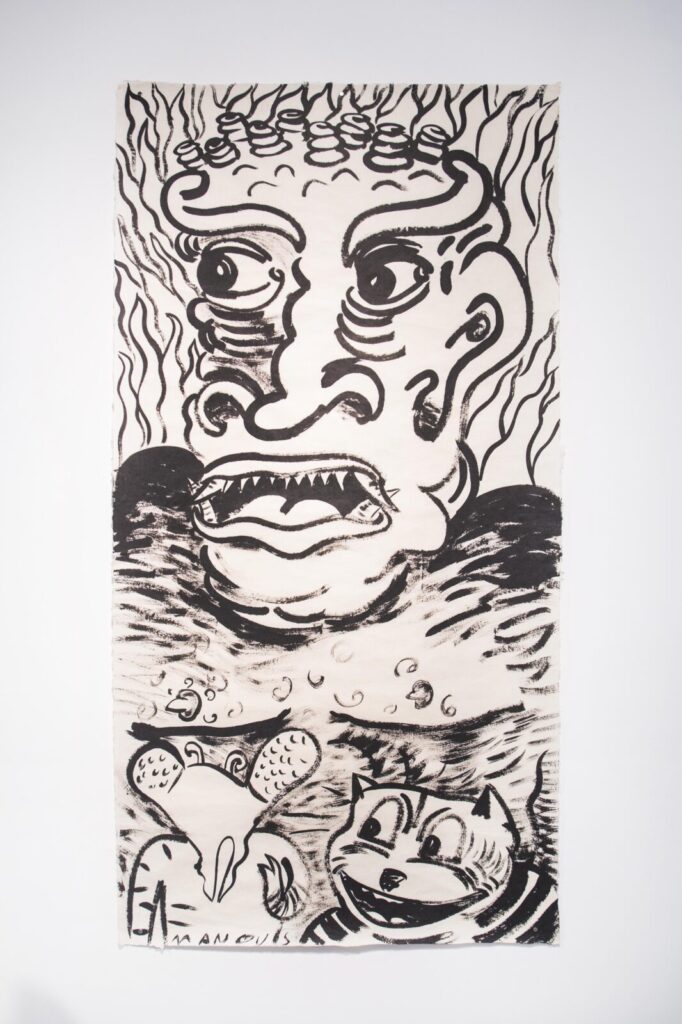
To be sure, Mangus’ work is playful and expressive—roughhewn and experimental in his deeply incised clay surfaces, and enchanting in his quick, observational life studies.  For example, his Sumi ink drawing Downtown with the Family, 1988, features dozens of faces of city folk, mostly from the chest and neck up, giving each other knowing sideways glances, carrying tools and lunchboxes, sporting hardhats and baseball caps, smoking cigarettes, and otherwise avoiding interpersonal engagement—all the while encroaching on each other’s personal space. Â
It is the perfect embodiment of city life:  avoiding the sideways gaze of your neighbor while going about your own business.  And just as one might people-watch in a city packed with characters, so too, one wants to spend time just looking at Mangus’ assorted cast of people.

This cross-cultural experimentation feels the most successful when the contrived narrative is obviously fabricated, and the artist takes no aim at authenticity.  For instance, the porcelain with blue and white glaze vessel, Two Women with Insect Guy Having Tea , 1980, features the face of what appears to be a large mantis (a reoccurring character in Mangus’ oeuvre,) receiving tea from a woman depicted in profile, her hair styled to resemble a headpiece along the lines of something one might encounter in a Mesoamerican relief sculpture.  Both the vessel itself as well as the far-fetched references of cultures within the scene being depicted upon it feel fantastical— not rooted in time or even reality.
Therein lies the magic of art:  whereas depicting reality encourages us to acknowledge specific truths, knowingly depicting fabricated realities can also allow us to reveal valid and substantial facts and discrepancies about the world we live in.  In their current exhibitions at Carl Solway Gallery, artists like Pfaff, Abrams, and Mangus give us some raw materials to do just that.




